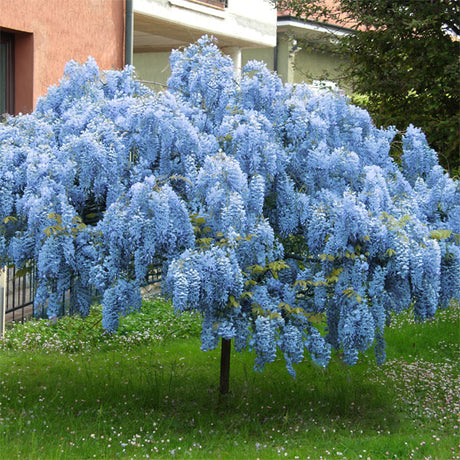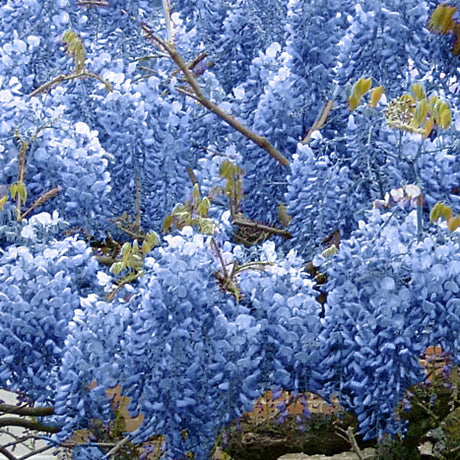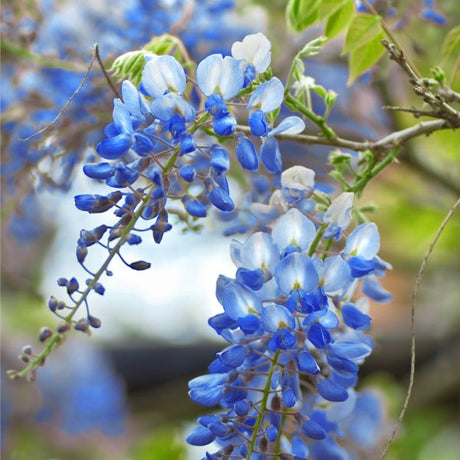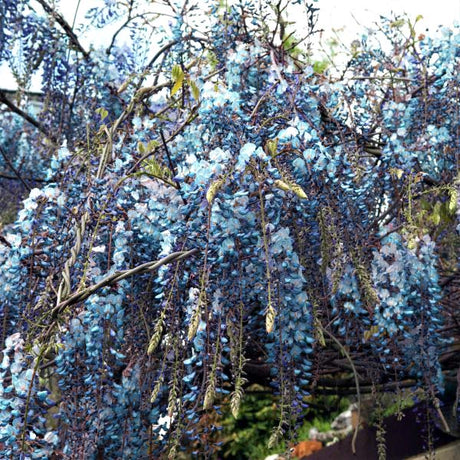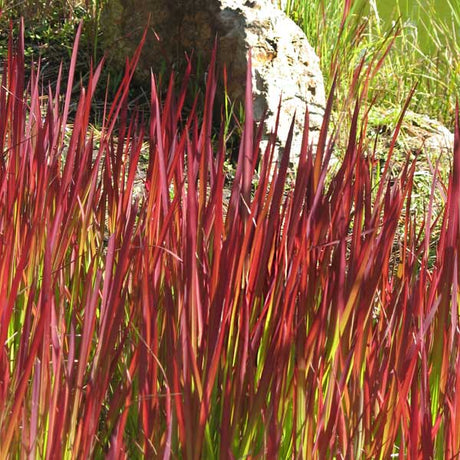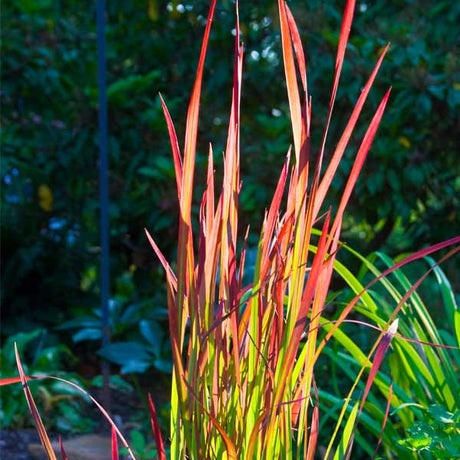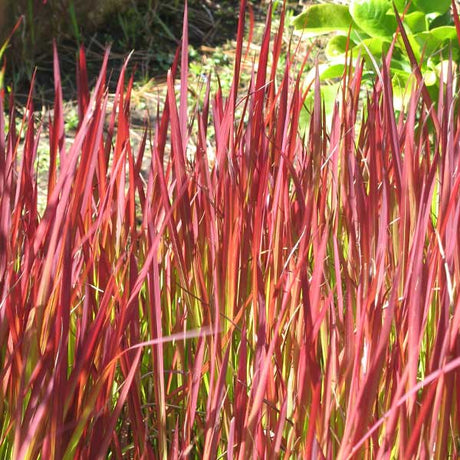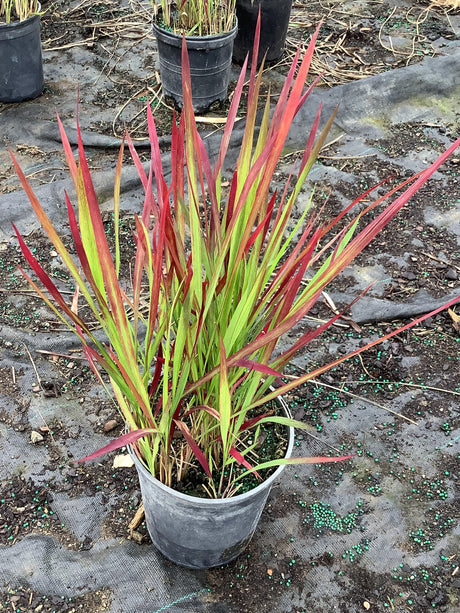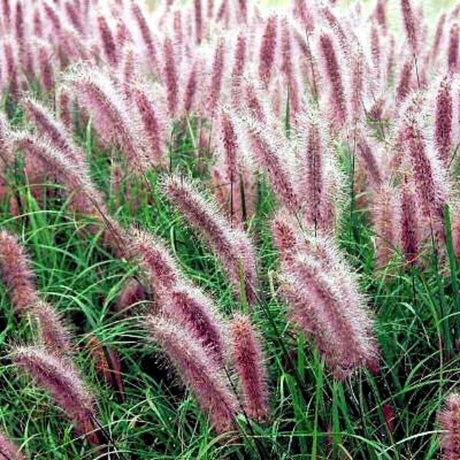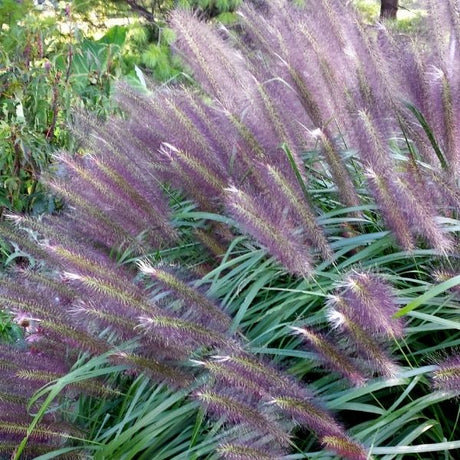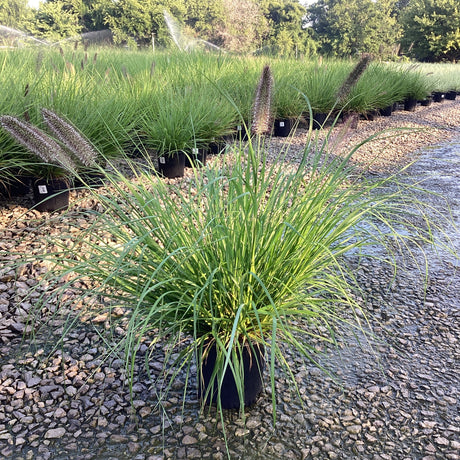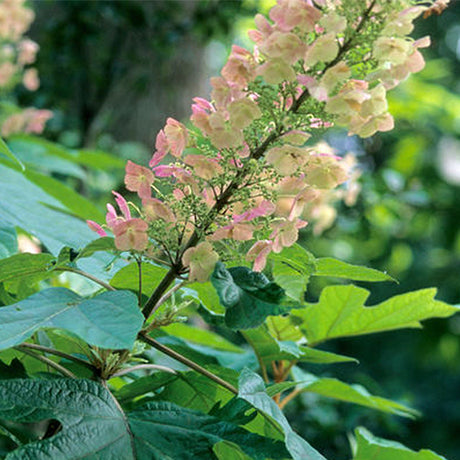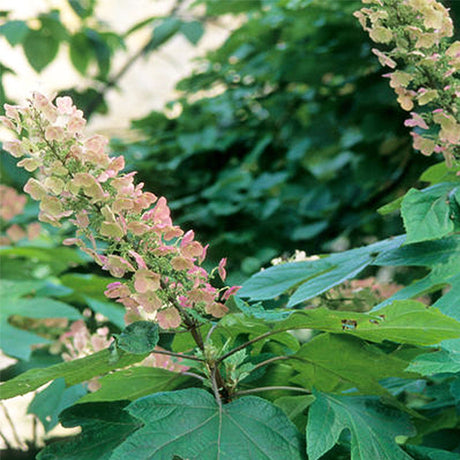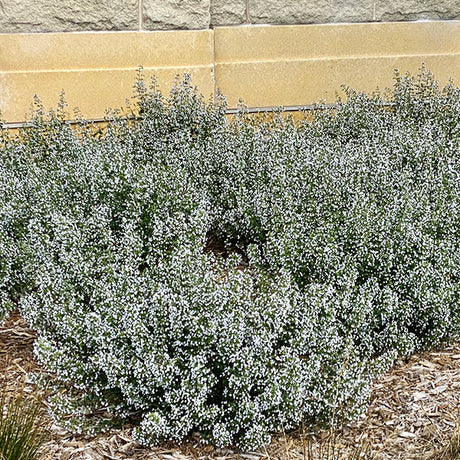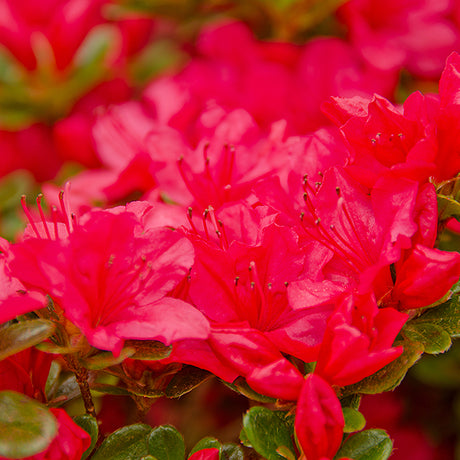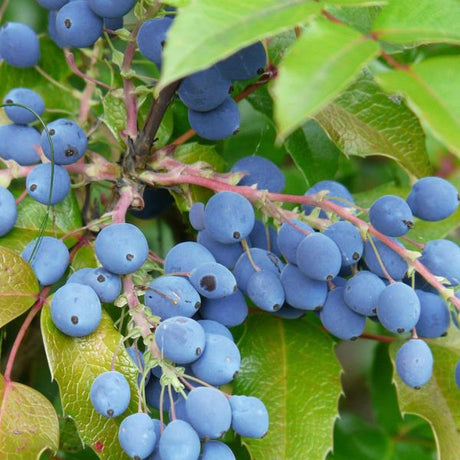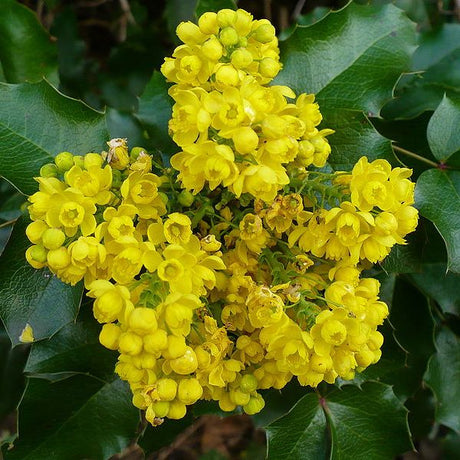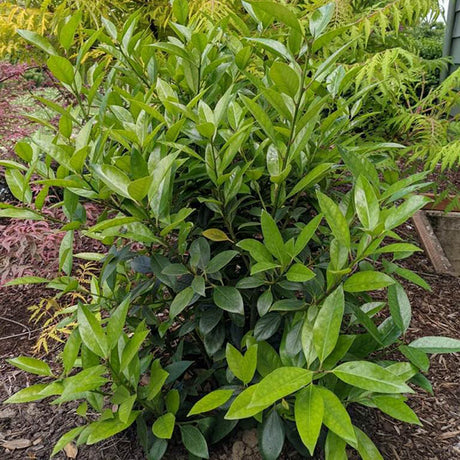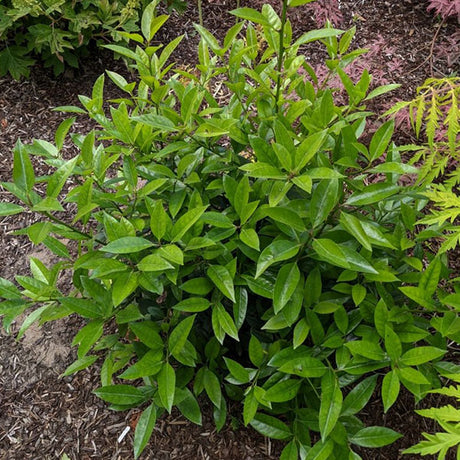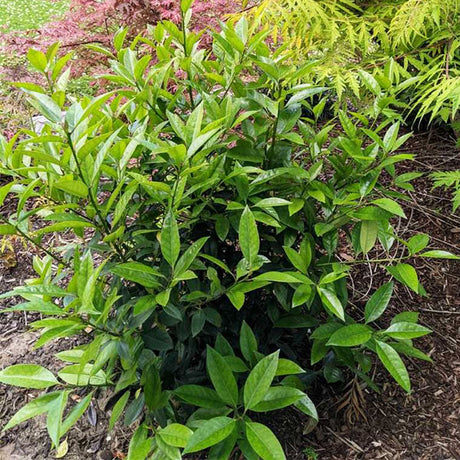Too hot to dig? Too tired to weed? You're not alone!

When summer heat strikes or your schedule's already packed, it's easy to let the garden go wild, but not the good kind of wild. The truth is, Ma Nature loves a clever shortcut, and there's no shame in designing a low-effort, high-impact landscape. You just need the right mix of plants, practical planning, and a few sneaky gardening hacks.
With these 10+ tips for low-maintenance gardening, you'll have a yard that looks expertly cultivated with minimal elbow grease, leaving more time for lemonade and lawn chairs!
Let your garden do the work while you still take all the credit!
1. Pick Low-Maintenance Plants That Do the Work for You
Look for self-sufficient stars that don't fuss over watering or grooming.
- Coneflowers, Russian Sage, Black-Eyed Susans, and Native Grasses all laugh in the face of summer heat.
- These plants are drought-tough, long-blooming, and pollinator-approved.
- Perennials like these return yearly with little effort. Read up on planting perennials if you're new to the game.
2. Group Plants By Watering Needs
Work smarter, not harder, by employing hydro-zoning.
- Keep high-needs plants like Ferns and Hydrangeas together in shady, moist spots.
- Cluster drought-lovers like Lavender, Yarrow, and Hyssop in sunny, dry zones.
- This trick simplifies irrigation and cuts your watering time in half!
3. Use Bigger Plants To Fill Space
Fewer plants. More punch!
- Large-scale plants like Elephant Ear, Joe Pye Weed, and Feather Reed Grass make a dramatic statement.
- Use them to anchor corners, disguise fences, or fill beds with instant flair.
- Less planting and less mulch are needed overall!
4. Go Wild With Groundcovers
Groundcovers are the lazy gardener's best friend. They're perfect for awkward edges, paths, and slopes. Need more ideas? Check out these low-growing flowering plants.
-
Creeping Thyme – Spreads into a low‐growing, fragrant carpet of tiny foliage that blooms purple-pink in summer. Drought-tolerant, deer-resistant, and invites bees while suppressing weeds. Great for use between pavers and along pathway edges.
-
Creeping Jenny – Fast-spreading with vivid green to golden foliage and occasional yellow blooms. Ideal for damp spots, edges, rockeries, and between pavers.
-
Chocolate Chip Ajuga – A compact variety with burgundy foliage and blue flower spikes; forms a dense mat that thrives in part shade.
-
Vinca Major (Periwinkle) – Evergreen groundcover with glossy leaves and springtime blue-purple flowers; great for shade and poor soils.
- Groundcover Roses (e.g., Sunset Happy Trails™) – Low-growing, spreading roses that bloom reliably with minimal pruning and attract pollinators.
These picks add lush texture, color, and natural weed control with almost no fuss!
5. Mulch Like You Mean It
Stop the back-breaking weeding and reduce how much you need to water by using mulch!
- A thick layer of arborist mulch around your plants helps regulate soil temperatures and blocks sunlight from weed seeds.
- Bonus: It breaks down and feeds your soil over time, so fewer amendments are needed.
- Bonus Bonus: It makes your garden beds look tidy, polished, and boosts curb appeal with the wide array of colors mulch is available in!
6. Let Nature Be Your Gardener
Sometimes the best garden plan is doing less, or even nothing at all.
- Start by skipping the shovel with sheet mulching: layer cardboard or newspaper over weedy spots, soak it, then pile on compost and a generous layer of arborist mulch. No digging, no tilling, just plant right into it.
- Try "layer composting" to build a new bed from scratch: layer greens (like grass clippings or veggie scraps) and browns (like leaves and straw) in a raised bed or right on the ground, then let Ma Nature cook it into rich soil.
- Want a shortcut? Use bagged soil directly on grass: lay the bag flat, slice open the top, and plant into it like a mini raised bed. It works especially well for herbs and small veggies.
- Choose plants that don't need constant grooming. Self-cleaning bloomers mean you can skip the deadheading.
- Let some plants go to seed. Not only does it save you effort, but birds feast on the seedheads, and the dried stems provide shelter for bees, butterflies, and other beneficial insects.
A slightly "wild" garden is often the healthiest one. Messy edges and natural layers aren't flaws. They're a sanctuary for pollinators and a ticket to less work for you.
7. Reuse and Repurpose With Style
Give your budget (and the landfill) a break!
- Use what you have instead of buying new. Broken pots become charming toad homes, spilled planter gardens, fairy houses, or garden edge accents.
- Old buckets, crates, or drawers make quirky containers. Just drill drainage holes and plant away!
- Reuse rainwater with a simple barrel or bucket setup to save on your water bill and give plants a softer, chemical-free drink.
- Got extra bricks, rocks, or logs? Use them to outline beds or paths. No need to buy edging. Those extra sticks and twigs can be piled up to become beneficial insect hotels!
- Even fallen leaves and garden trimmings can be chopped up and used as free mulch, or make your own compost.
Lazy gardening isn't just about doing less. It's about doing smart. The more you reuse, the less you have to haul, buy, or build from scratch. Let your garden be both thrifty and thoughtful.
Want more shortcuts?
- Use pre-planted container groupings or transplant mature plants to avoid starting from seed.
- Consider raised beds with bagged soil to skip digging altogether. Just build the frame, dump, and plant.
- Or let Ma Nature do the seeding: scatter native wildflower seed mixes in a cleared area, water them in, and walk away. You'll get a wildflower or cottage-style garden with hardly any work.
8. Plant In Containers Where It Counts
Contain the chaos, and the cost!
Container gardening is a lazy gardener's secret weapon, and not just for small spaces or patios. It solves a host of garden challenges while keeping things tidy and manageable.
-
Save time by skipping the digging and bed prep. Just fill a pot with quality soil and plant away. Instant garden, no shovels required!
-
Save money by growing just a few high-impact plants in focal areas like entryways, patios, or balconies. No need to fill whole beds to make a big impression.
-
Control soil quality instantly. Bad native soil? Containers let you bypass it entirely with a bag of well-draining potting mix.
-
Grow in tough spots! Rocky terrain, steep slopes, tree-root-infested areas, or shaded porches become planting opportunities with movable pots.
-
Avoid weed wars. Containers drastically reduce the number of weeds you'll battle, and mulching the surface of your pots helps even more.
-
Target watering by grouping containers together, which creates a humid microclimate and cuts down on water loss.
-
Extend your growing season by moving pots to warmer, sunnier spots in spring and fall, or pulling frost-sensitive plants into the garage on chilly nights.
- Experiment affordably with new plants or designs without committing to full bed renovations.
Use large planters for small trees or flowering shrubs, hanging baskets for trailing color, and repurposed items for budget-friendly charm. You'll get all the beauty with none of the backache.
9. Water The Smart Way!
Don't play sprinkler tag or lug around awkward hoses that would rather fight you than work right! Let your in-ground systems do the soaking for you!
- Install drip irrigation or a simple in-ground soaker system to deliver water right to the roots where it's needed most. These systems are efficient, reduce evaporation, and can be set on timers so you're not stuck hand-watering in the heat.
- Take it up a notch with automatic timers. Set them once and let your garden water itself on a regular schedule. This is especially helpful during vacations, dry spells, or forgetful weeks.
- Use an olla (pronounced oya), or for an even easier route, repurpose old milk jugs or soda bottles with tiny holes and bury them next to plants to create slow-release watering stations. Setting them up directly near plants that need extra water, or around your garden when going on vacation.
- When caring for new plants, use the Finger Test to avoid over- or under-watering. Just poke your finger into the soil a couple of inches deep to check moisture levels (watch how here!).
- Water early in the morning to reduce loss to evaporation and give plants a full day to dry out, which helps prevent disease. Morning waterings also allow the sun to dry the leaves of dew early, reducing instances of foliar disease and fungal issues.
10. Embrace Native Plants For Easy Success!
Native species are built for your climate, weather, and need far less maintenance and water.
- Natives thrive with local rainfall and temperatures, and resist pests naturally.
- Try Bee Balm, Butterfly Weed, or Switch Grass, all gorgeous, resilient, and wildlife-friendly!
- Plus, they support pollinators and native birds without extra care.
- Check out Natives for your State here!
Bonus Tips:
11. Choose Perennials Over Annuals
Skip replanting every year!
- Perennials come back season after season, saving you time, effort, and money.
- Look for varieties like Daylilies, Hostas, and Coreopsis that thrive with minimal care.
- Many spread on their own over time, filling space and suppressing weeds. Dividing clumps doubles your plants, too!
12. Let Fallen Leaves Do the Work

Leave the leaves! Seriously!
Fallen leaves make excellent mulch, suppress weeds, hold moisture, and enrich soil as they break down.
Rake them into garden beds in fall and let Ma Nature handle the rest.
Bonus: They create a cozy habitat for overwintering pollinators.
13. Limit Your Lawn
Grass is needy and greedy!
- Replace portions of the lawn with native groundcovers, ornamental grasses, or wildflower patches. Or add hedges and property division to spruce up your curb appeal and boost privacy!
- Try planting lawn alternatives that keep the green look but won't need as much water, fertilizer, or maintenance.
- Less mowing, less watering, and more time for hammocks and iced tea.
- Even a border strip or corner conversion can cut your chore list dramatically!
14. Plant in the Right Place
Right plant, right place = less stress!
- Match the sun and soil needs when planting! A sun-loving plant in the shade will always struggle, and vice versa.
- Observe your yard's microclimates (sunny wall, breezy slope, shady corner) and plant accordingly for best results with the least upkeep.
Green Thumbs Without The Garden Gloves!

You don't have to sacrifice beauty for ease! By leaning on Ma Nature's smartest performers and working with your space, not against it, your garden can look lush, lively, and downright professional. So skip the marathon mulching and hour-long weeding sessions. This summer, let your yard thrive while you sit back and soak in the view.
Now that you're not spending hours sweating behind a shovel, you've got time for the good stuff: sipping iced tea in the shade, hosting sunset dinners, reading under a tree, or stargazing on a hammock! Maybe even letting the kids run through the sprinklers while the butterflies flit through the flowers.
Your backyard should be a destination, not a to-do list.
Happy Planting!


